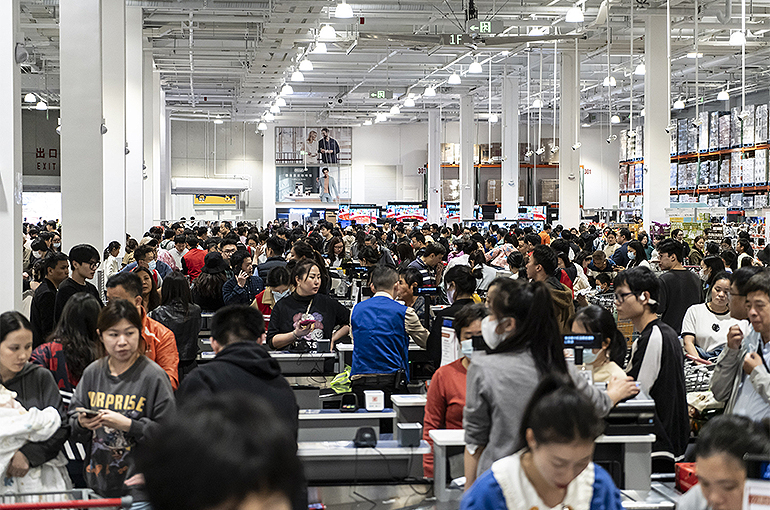 Shenzhen Enters 'CNY1 Trillion Consumption Club' as Hong Kongers’ Spending Soars
Shenzhen Enters 'CNY1 Trillion Consumption Club' as Hong Kongers’ Spending Soars(Yicai) Jan. 15 -- Shenzhen is poised to log more than CNY1 trillion (USD140 billion) in the sales of consumer goods last year as the hi-tech hub in southern China becomes an increasingly popular shopping destination for those living in nearby Hong Kong and Macao as the Guangdong-Hong Kong-Macao Greater Bay Area becomes more integrated.
In the first 11 months, the retail sales of consumer goods in Shenzhen jumped 7.3 percent year on year to CNY950 billion (USD132.4 billion) and is expected to top CNY1 trillion by the end of December, according to data from the Shenzhen Municipal Bureau of Statistics.
People living in west Kowloon can reach the center of Shenzhen in only 10 minutes as fast transport links and speedy customs clearance make the mainland easy to get to. It is not unusual for people living in Hong Kong to pop across to Shenzhen for some after-work shopping during the week.
Over the past three years, cheaper prices on the mainland, the wide variety of products available and the good standard of services have led to a big jump in spending from people from Hong Kong and Macao. They are mainly splashing out on retail, leisure activities and dining out. Other areas such as sightseeing, dental treatments and car maintenance are also seeing an uptick in spending.
Shenzhen is the only one out of China’s four first-tier cities that has not yet entered the 'CNY1 trillion consumption club,' logging CNY970.8 billion (USD135.8 billion) in 2022, as consumption is not one of its main strengths.
But the city is doing much to change that and the government has set a target of CNY1.2 trillion (USD174.3 billion) by 2025. Last year the Shenzhen Municipal Bureau of Commerce launched more than 1,000 activities to boost consumption.
In recent years, the number of shopping centers has exploded. There are now more than 100 malls larger than 50,000 square meters and eight with an annual revenue of over CNY3 billion (USD420 million).
Costco opened a store in Shenzhen’s Longhua district last week, the US retail giant’s sixth on the mainland and the first in south China. Thousands of people, including many Hong Kongers, queued up on the opening day. The outlet has already welcomed 130,000 members, 10 percent of which are from the special administrative region.
Editors: Tang Shihua, Kim Taylor